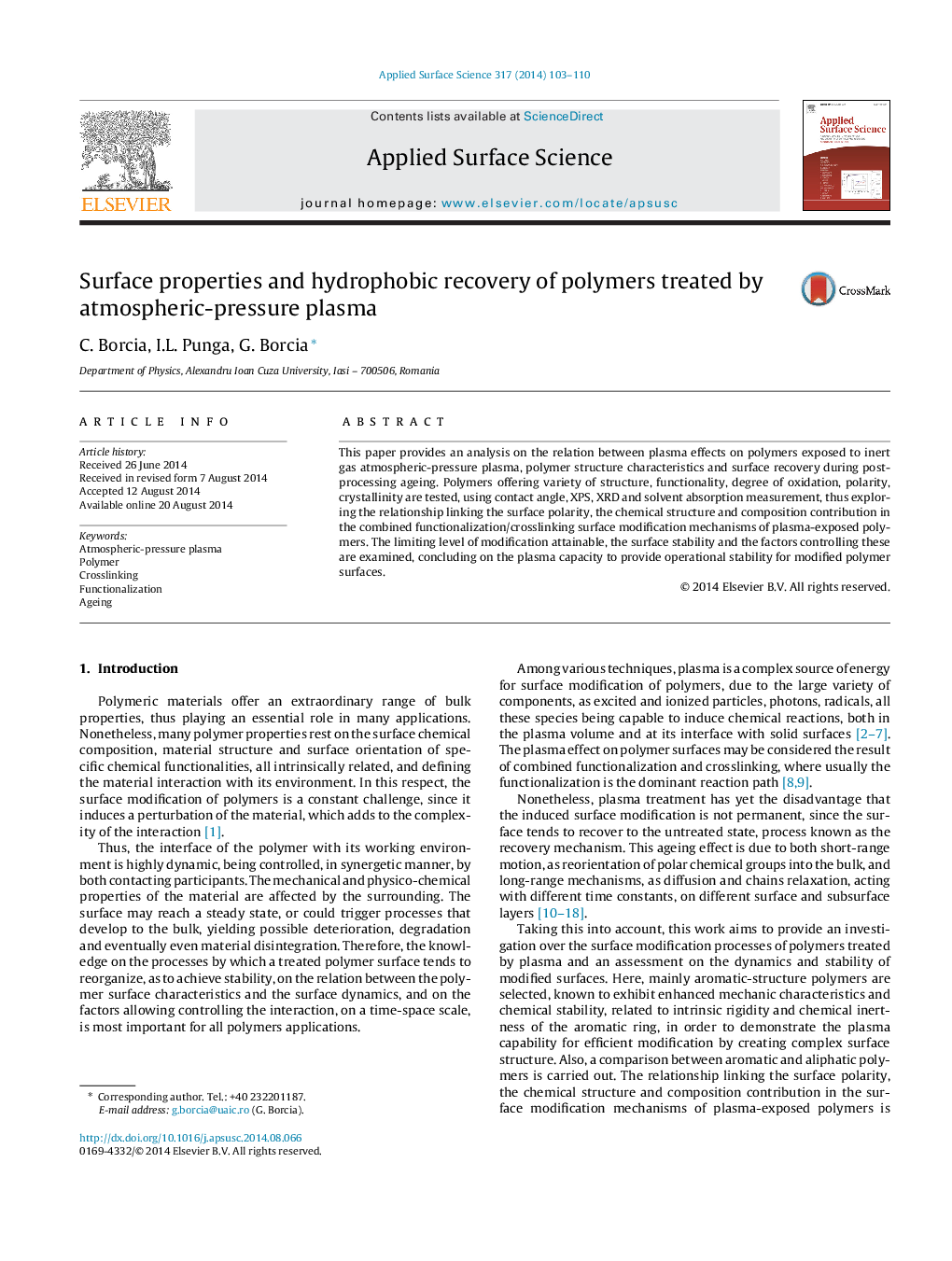| Article ID | Journal | Published Year | Pages | File Type |
|---|---|---|---|---|
| 5360963 | Applied Surface Science | 2014 | 8 Pages |
â¢Modification more efficient for aromatic-structure polymers, compared to aliphatic ones.â¢10 s plasma exposure to achieve maximum attainable surface modification.â¢Oxidized groups are not removed from the surface by interaction with water.â¢Surface properties stability depending on the degree of perturbation of the surface.â¢Short-range reorientation of surface polar groups as dominant ageing mechanism.
This paper provides an analysis on the relation between plasma effects on polymers exposed to inert gas atmospheric-pressure plasma, polymer structure characteristics and surface recovery during post-processing ageing. Polymers offering variety of structure, functionality, degree of oxidation, polarity, crystallinity are tested, using contact angle, XPS, XRD and solvent absorption measurement, thus exploring the relationship linking the surface polarity, the chemical structure and composition contribution in the combined functionalization/crosslinking surface modification mechanisms of plasma-exposed polymers. The limiting level of modification attainable, the surface stability and the factors controlling these are examined, concluding on the plasma capacity to provide operational stability for modified polymer surfaces.
